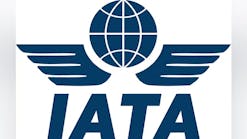|
Understanding The Leadership Position of U.S. Aviation Manufacturing WASHINGTON, D.C. – With the announcement on Saturday of the Trump Administration’s intent to impose tariffs on Canada, Mexico and China, the General Aviation Manufacturers Association (GAMA) is underscoring the significant contributions of the U.S. aviation manufacturing sector and its global leadership position. The general aviation industry delivers $247 billion in annual output and supports over 1.1 million jobs in the United States. In 2023, U.S. fixed-wing aircraft manufacturers exported a total of 490 piston, turboprop and jet airplanes, representing about 24.6% of the total number of aircraft produced. These exports were valued at an estimated $5.2 billion, which was approximately 46% of all U.S. general aviation manufacturers’ total billings for fixed-wing aircraft. The 2024 shipments and billings numbers, as well an updated U.S. Economic Impact Study, will be released in Washington D.C. on February 19th. Given the global nature of the aviation manufacturing industry, these proposed tariffs, as well as potential reciprocating tariffs, could have an enormous impact with many unintended consequences on the industry. The U.S. aviation industry’s trade surplus and global competitiveness has benefited from generally being excluded from tariffs, through the utilization of robust safety bilateral agreements between the U.S. and other countries to advance aviation safety and efficiently facilitate the global flow of products. U.S. industry benefits from this arrangement, given its collective technical strength, history of innovation, global competitiveness and proven economic record as a net exporter. Additionally, these arrangements have led to stable and increased investment in research and development, engineering, advanced manufacturing processes and innovation. Another area of impact is the maintenance, repair, and overhaul (MRO) sector, which employs almost 210,000 people in the United States. If the parts and products used in the MRO work are subject to tariffs, it could jeopardize the viability of domestic MROs and their highly skilled workforce, given that repair station work may be moved by aircraft owners and operators to outside the U.S. due to increasing costs. It is vital to recognize that U.S. aviation manufacturing is in a global leadership position. This position can be improved by government policies and action focused on strengthening aviation safety agreements, policies and investments to bolster innovation, as well as measures to address specific aviation supply chain challenges. GAMA is committed to working with the Trump Administration to advance safety, job creation and economic competitiveness in the industry.
|


